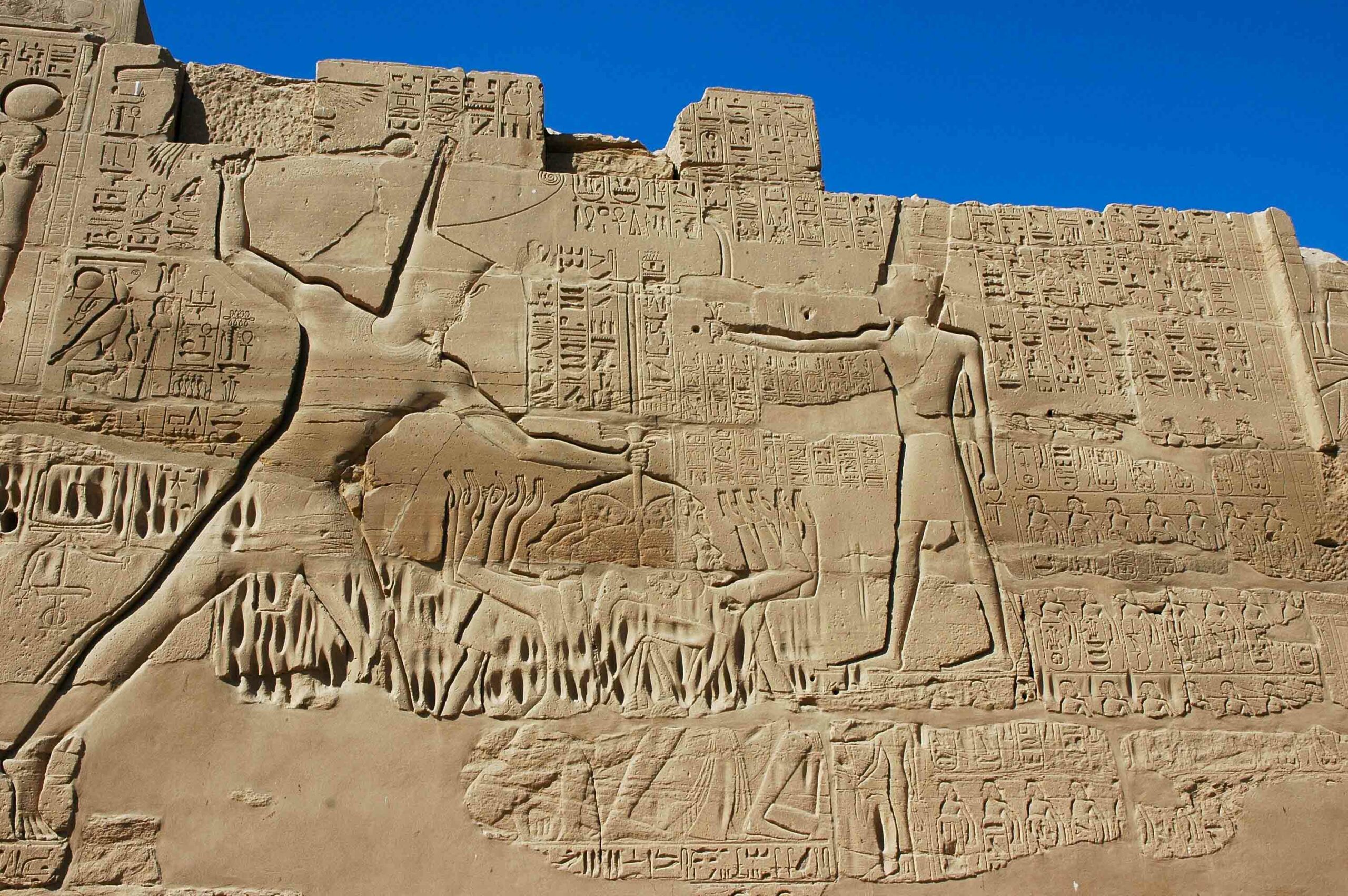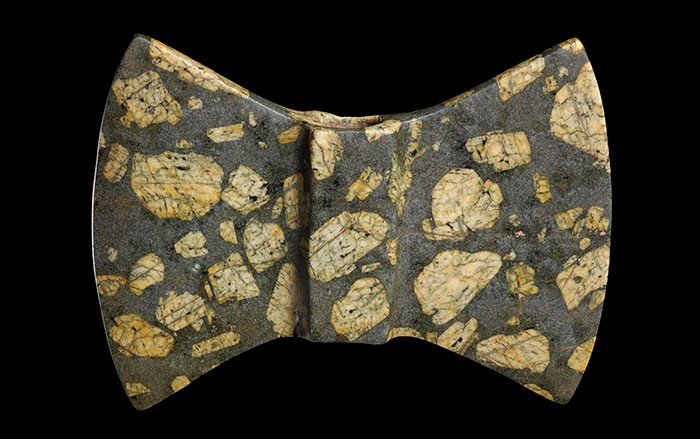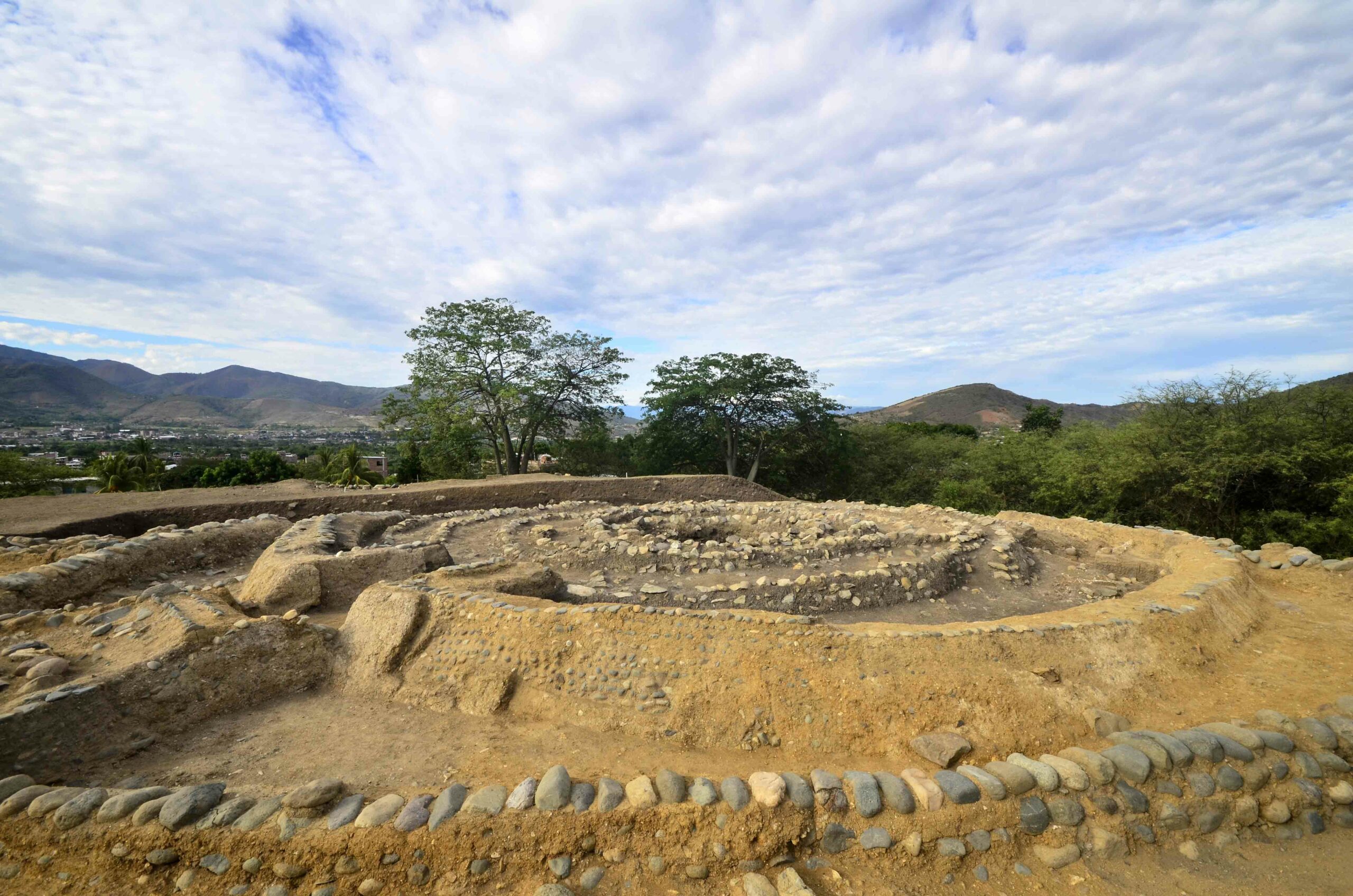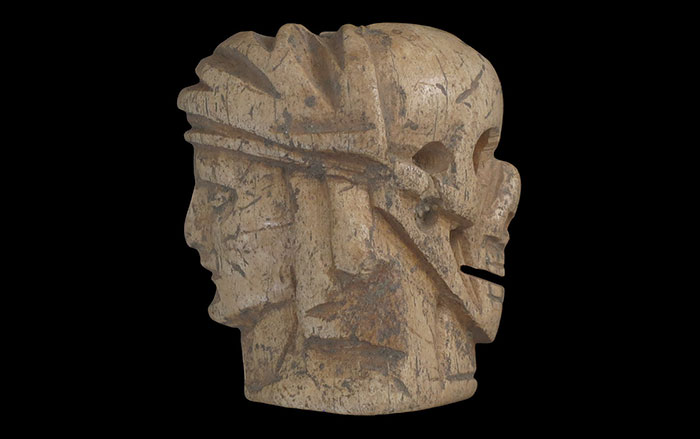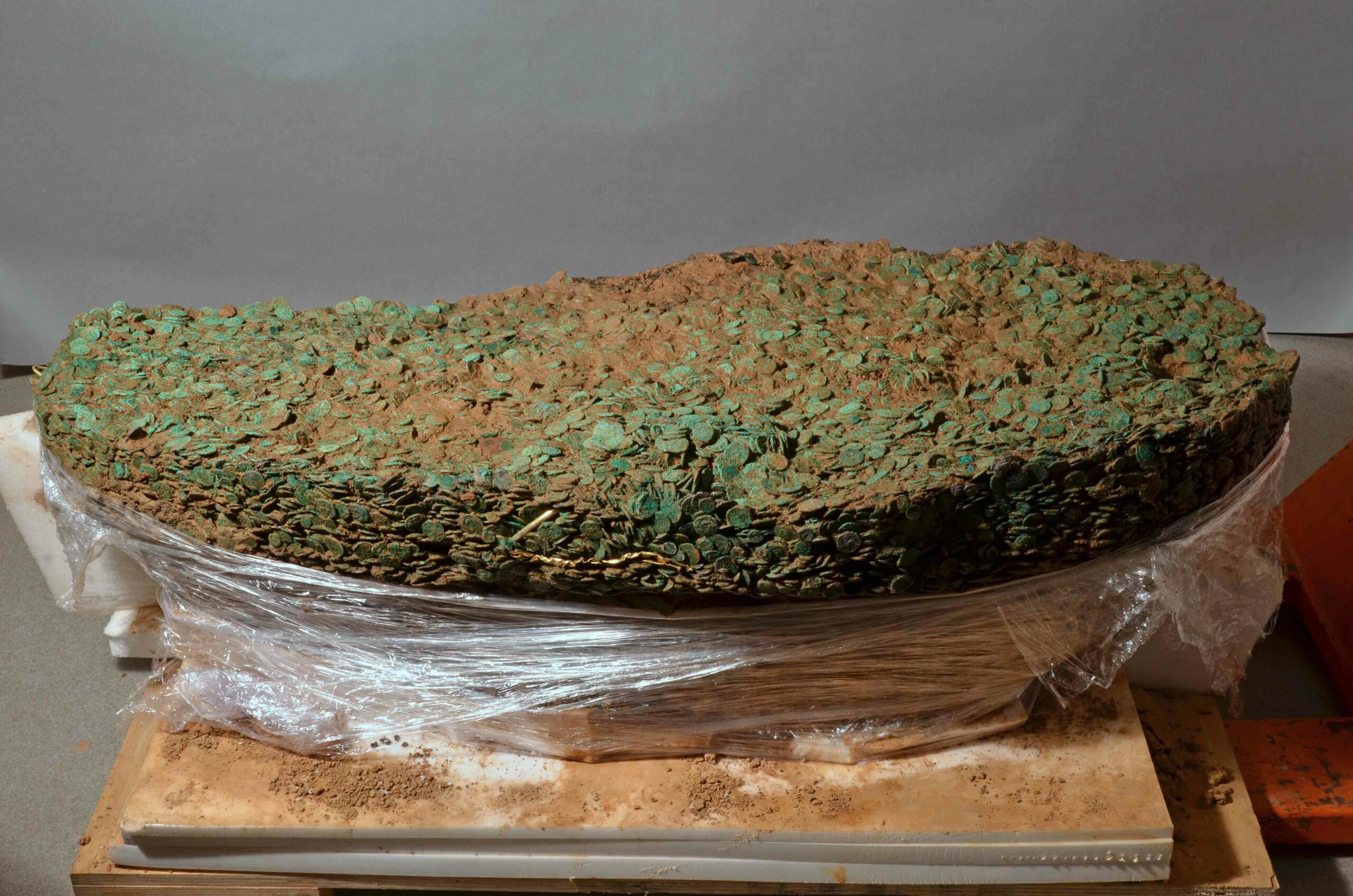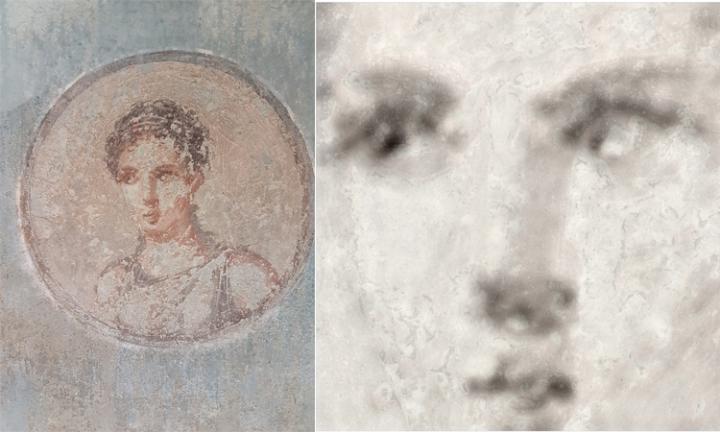
WASHINGTON, D.C.—A previously unstudied portrait of a Roman woman in Herculaneum, which was destroyed in A.D. 79 by the eruption of Mount Vesuvius, has been revealed using a portable X-ray fluorescence machine, according to a report from Seeker. Excavations in the nineteenth century uncovered much of Herculaneum, including the “House of the Mosaic Atrium,” where the portrait was found. Analysis by Eleonora Del Federico, a chemistry professor at Pratt Institute, showed that a young woman was sketched with an iron-based pigment and then her eyes were highlighted using a lead-based pigment. High levels of potassium detected in the woman’s cheeks suggest a green earth-based pigment was used to help create a flesh-toned color. “We were very surprised at the complexity and sophistication of the painting technique, the use of color, mixture of pigments and layering,” Del Federico said. For more, go to “The Charred Scrolls of Herculaneum.”






